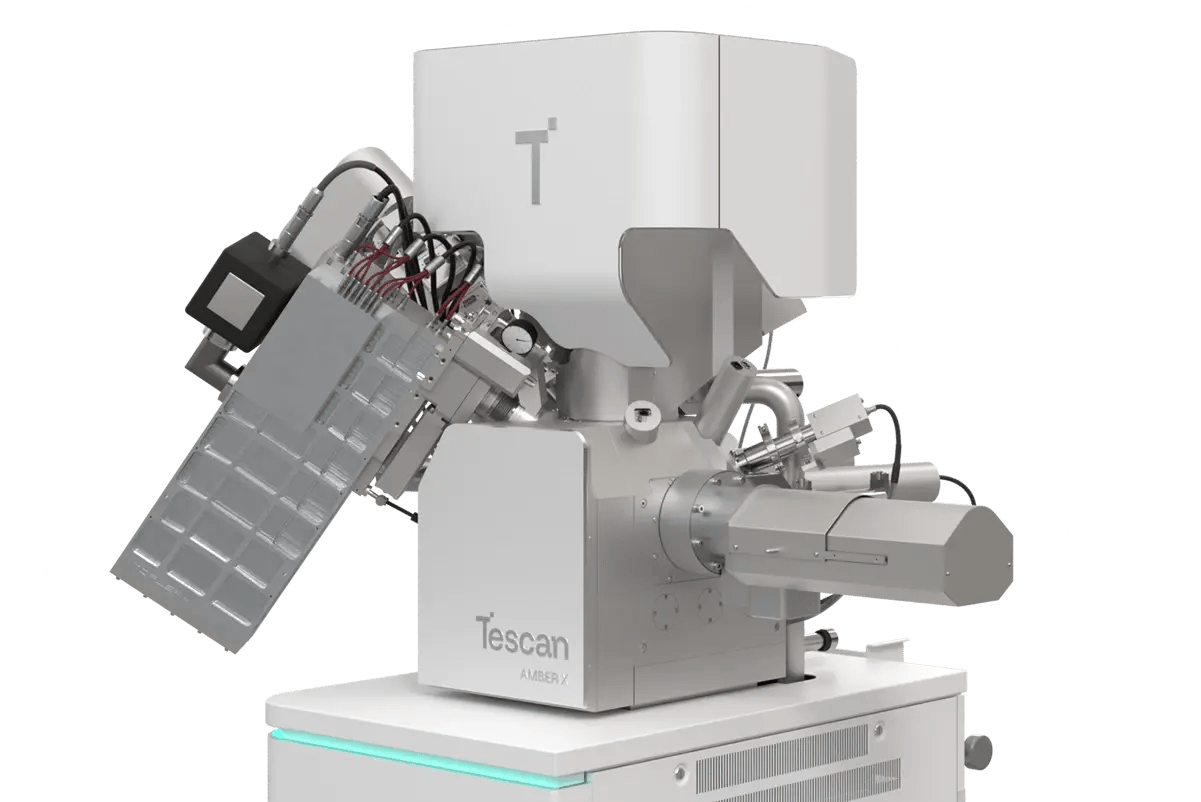1. Root of the Problem
Why Orthogonal FIB Struggles in Delayering Thick I/O and Upper Metal Layers
Accurate semiconductor failure analysis depends on clean, uniform deprocessing. Yet standard orthogonal FIB approaches often fail when applied to thick I/O stacks and upper interconnect layers.
Curtaining artifacts, uneven removal, and uncertain endpoints obscure device features and complicate analysis. Non-planar structures and passivation layers add further challenges, making reproducibility difficult and slowing workflows.
Tescan Essence™ Low Angle Polishing overcomes these limitations with a plasma FIB strategy that combines low-angle incidence, automated multi-angle rotation, and real-time BSE monitoring. The result is smooth, curtaining-free surfaces that preserve structural fidelity and enable controlled, layer-by-layer deprocessing.
- Low-angle plasma FIB minimizes curtaining in thick I/O stacks
- Automated four-direction polishing ensures reproducible surfaces
- In-column BSE monitoring provides real-time endpoint detection
- Uniform delayering of non-planar and passivation layers
- Reliable workflows reduce operator variability and improve efficiency
Gain full control over upper layer deprocessing and achieve consistent results with Tescan Low Angle Polishing.
2. Materials and Methods
How Low Angle Polishing Was Applied to Delayer Thick I/O and Upper Metal Layers
A semiconductor device containing a thick I/O region was selected to demonstrate low angle plasma FIB polishing. Initial localization of the area of interest was performed in SEM mode, with in-column BSE imaging used to evaluate surface morphology and identify layer transitions.
Plasma FIB milling was then performed at a shallow tilt angle of 2–4°, combined with automated four-direction stage rotation. This ensured uniform ion beam exposure and minimized curtaining artifacts during material removal.
Real-time BSE monitoring within the Tescan Essence™ interface provided live visualization of metal and via transitions, with intensity plots guiding endpoint detection and layer control. SEM image logging was used throughout the process for documentation and verification.
The integrated workflow enabled smooth, reproducible delayering of upper metal layers and passivation regions, producing clean cross-sections suitable for failure analysis and structural characterization.
3. Results and Discussion
Curtaining-Free Delayering Enables Reliable Analysis of Upper Metal Stacks
Tescan Essence™ Low Angle Polishing produced smooth, uniform surfaces across the I/O region, even in thick upper interconnect layers. Plasma FIB milling at low tilt angles with automated four-direction rotation eliminated curtaining artifacts that normally obscure structures.
Real-time in-column BSE monitoring provided continuous visibility of metal–via transitions, enabling precise endpoint detection and controlled removal of individual layers. Intensity plots confirmed reproducible layer-by-layer deprocessing at the 14 nm node.
SEM images logged throughout the workflow verified uniform surface quality and showed that non-planar structures and passivation regions were polished without distortion. Compared to orthogonal FIB methods, low angle polishing improved reproducibility, reduced operator dependency, and preserved structural fidelity.
This workflow demonstrates clear advantages for semiconductor failure analysis and process verification, delivering consistent results across complex I/O stacks and reliable access to underlying device layers.






